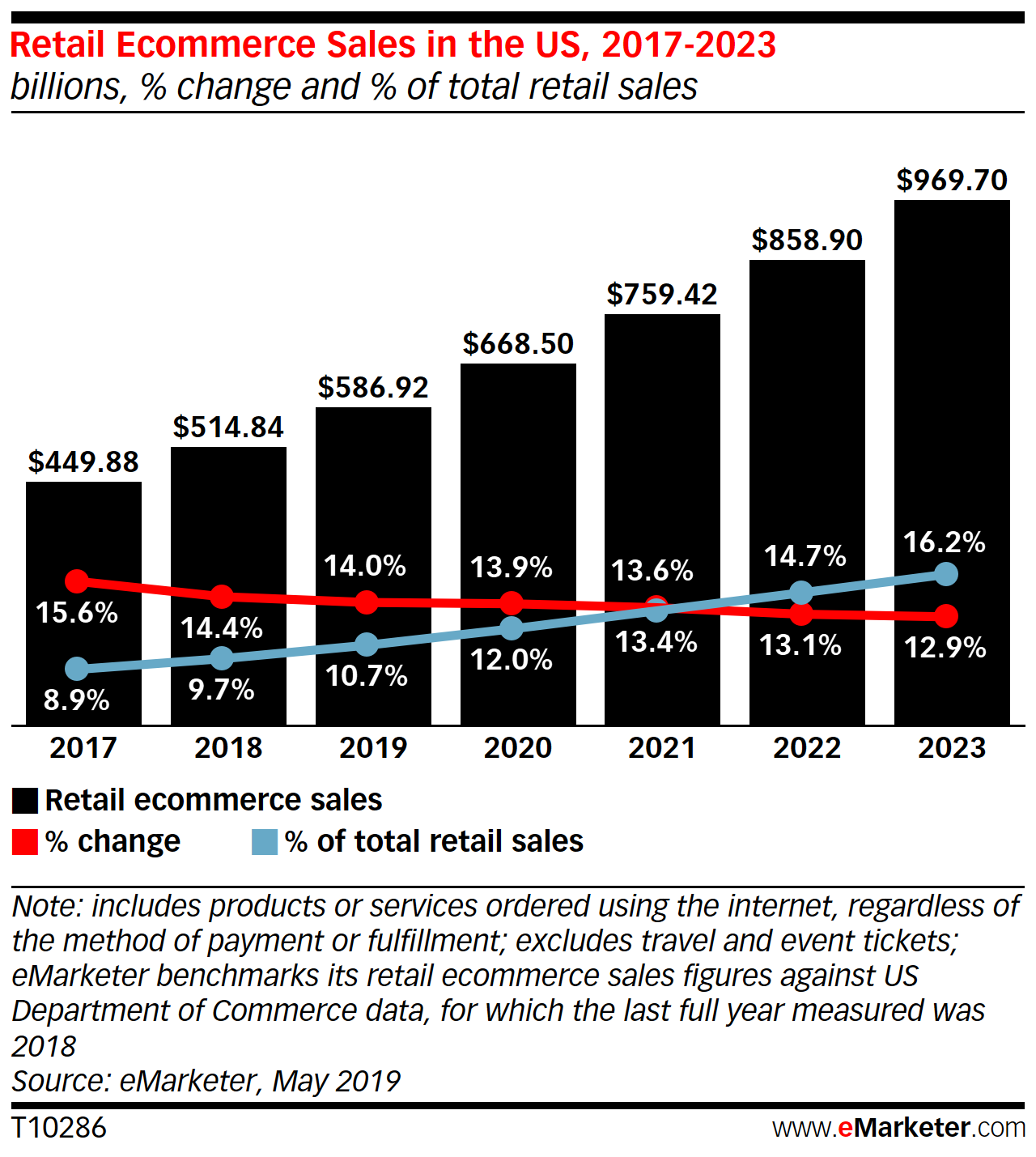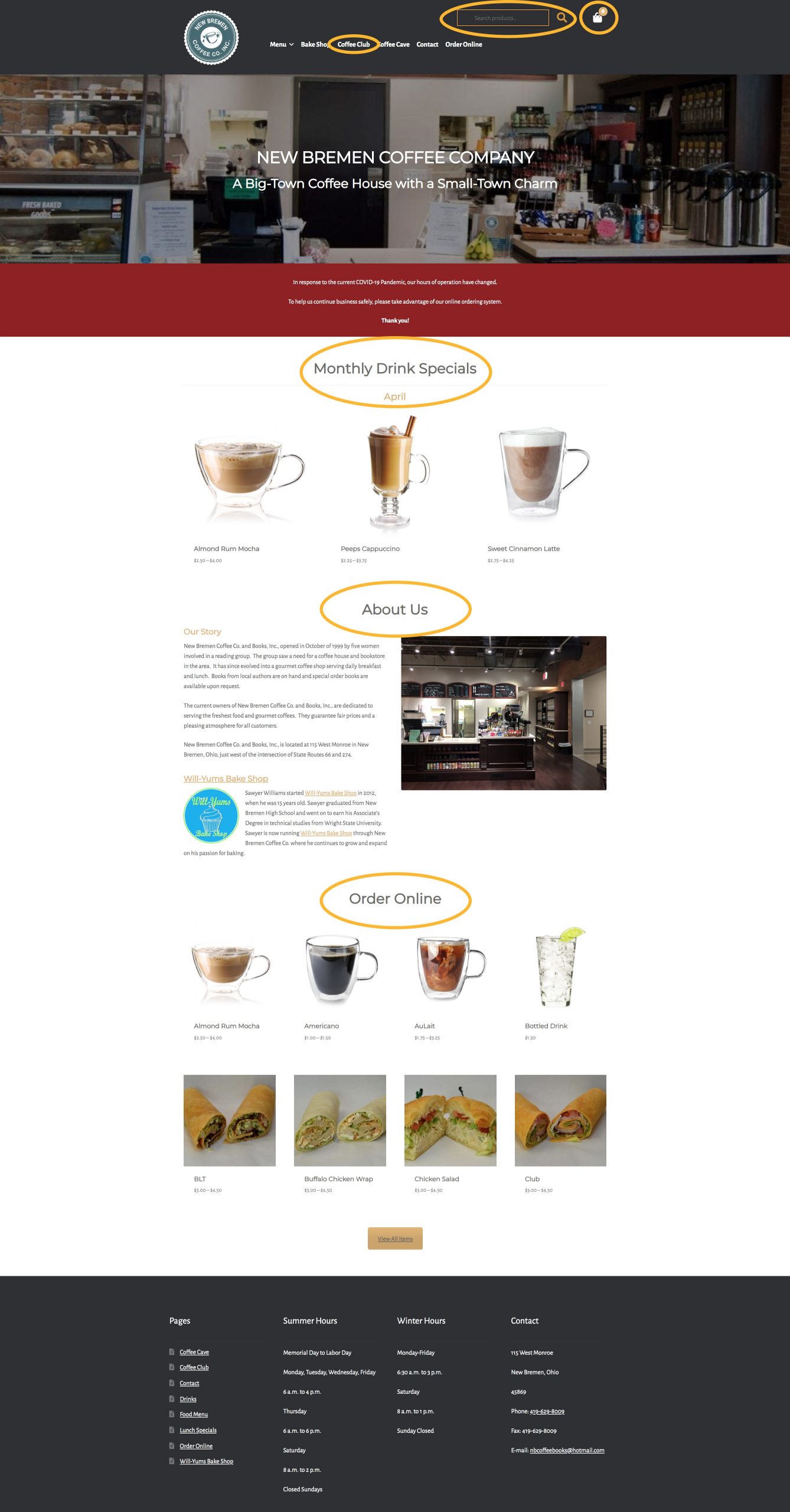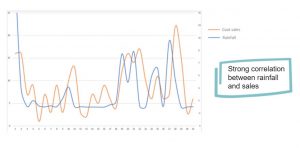
Nearly everyone shops online today. Some may even say eCommerce is one sector of the economy that is practically recession-proof. In fact, U.S. consumers are predicted to spend $ 668.50 billion — or 12% of total retail sales — via online stores in 2020. That’s more than $ 1 out of every $ 10 spent.
As a small business owner, you may be wondering: “How can I compete?”
You’ve poured your heart and soul into getting your brick-and-mortar store up and running. Your niche store/boutique helps fuel your small-town downtown. But when a global crisis clears the streets and the economy turns south, you must branch out beyond your walls in order to survive.
The Growth of E-commerce
An eMarketer report shows e-commerce retail sales are forecasted to more than double, from $ 449.88 billion in sales in 2017 to a predicted $ 969.70 billion by 2023. That means more than 16% of all retail sales will be spent online.

Source: emarketer Report US Ecommerce 2019
Why are analysts predicting this strong continued growth? Check out these seven factors:
- The millennial generation, a large portion of the retail buying sector, has grown up using eCommerce platforms.
- Gen XYZ and the Baby Boomers are no longer afraid to put their credit cards online. They are comfortable with – and even prefer – online shopping.
- Most of the population carries the digital world with them. With mobile phones in hand at all times, we can shop anywhere, anytime.
- Social media influences our shopping decisions every day and makes it easy to share products.
- We are an on-demand society. We want it now and expect convenience.
- Comparison shopping is much easier online (convenience again!) vs. having to travel from one store to another.
- You can’t buy niche products at the neighborhood big box store. The niche market has a very loyal customer base who will seek out specific products online.
A Recession is a Time to Invest in Growth
We all hear about “diversifying income streams,” but what does that mean during a potential recession? It means finding new audiences for your products, refining your current offerings and being creative with how you present yourself and your brand in the market.
Examine your current product lines and look for gaps and opportunities. What job is your product filling for your customers? What other jobs do those same customers need filling right now? What new customers can you gain via an online store?
Seize this opportunity to position your business to rebound ahead of your competitors.
Where to Start with an Online Store
Step 1: Don’t get overwhelmed thinking you need a complex, multi-page site with thousands of product offerings. An e-commerce site can be a simple one- or two-page site offering a handful of products. You can build upon the site as you grow. Take these things into consideration as you begin to map out your store.
Technology
Determine the eCommerce platform you want to build your shop on. There are many to choose from, such as Magento, WooCommerce, Shopify, Wix, YahooStore and more. Find a web agency or web developer who has experience in a few platforms and ask for a recommendation with pros and cons.
When choosing a platform, key features to vet out are:
- Design Options
- Content Management System
- Search Feature
- Shopping Cart Feature
- Pricing System
- Inventory and Order Management
- Payment Systems
Also, look for what additional features can be integrated in the future, such as email campaigns, live chat and videos.
Branding
It’s important to have a consistent brand look, feel and message for your online store. If you’ve never taken the time to develop your logo and brand look, or you feel your branding is outdated, now is the time to get it done! Take these questions into account:
- What is your differentiator?
- Who are you targeting?
- What is your story?
- What is the look of your brand?
- What is the voice of your brand?
- What is the emotional response you want to elicit in your customers?
Don’t stop at your online store! Carry your branding across to your packaging and package inserts, which are a great way to create a unique buying experience. Use inserts to show how to use a product or to cross-sell other products. Professional packaging signals high quality and allows you to engage with your audience and build excitement.
Content
The content of your website should use the language and lingo of your customers. Here are key elements to have within your website to help you sell:
- A ‘Rich’ Home Page. Your home page is where most of your traffic will land, so use the space. Include lots of images so customers can ‘see’ the product(s) in action. Also, provide a unique selling proposition. Include a section for your most popular products and a section for deals, steals or discounts of the day. The home page is also a great place to feature videos of your products. Tip: Don’t worry about making people scroll, because people do scroll today – especially when shopping. Think of scrolling down the home page as the new window shopping. Here are a few more tips on how to create a stellar home page:
- Make it mobile-friendly. That is a must-do, period.
- Include a phone number or form to easily allow buyers to contact you.
- Put the shopping cart in the right-hand corner of the header, as that is where people expect to find it.
- Make the search bar big. If users are searching in the bar, they are much more likely to purchase because they are already looking for something specific. Also, through analytics, you can see what they are searching for.

With an online store up and running, you now have opportunities to reach new audiences, target customers via email and social media and position your product to be available 24/7 no matter where your audience is shopping from or what direction the economy is headed.
This article originally appeared on the Marketing Essentials blog and has been republished with permission.
Digital & Social Articles on Business 2 Community
(51)









